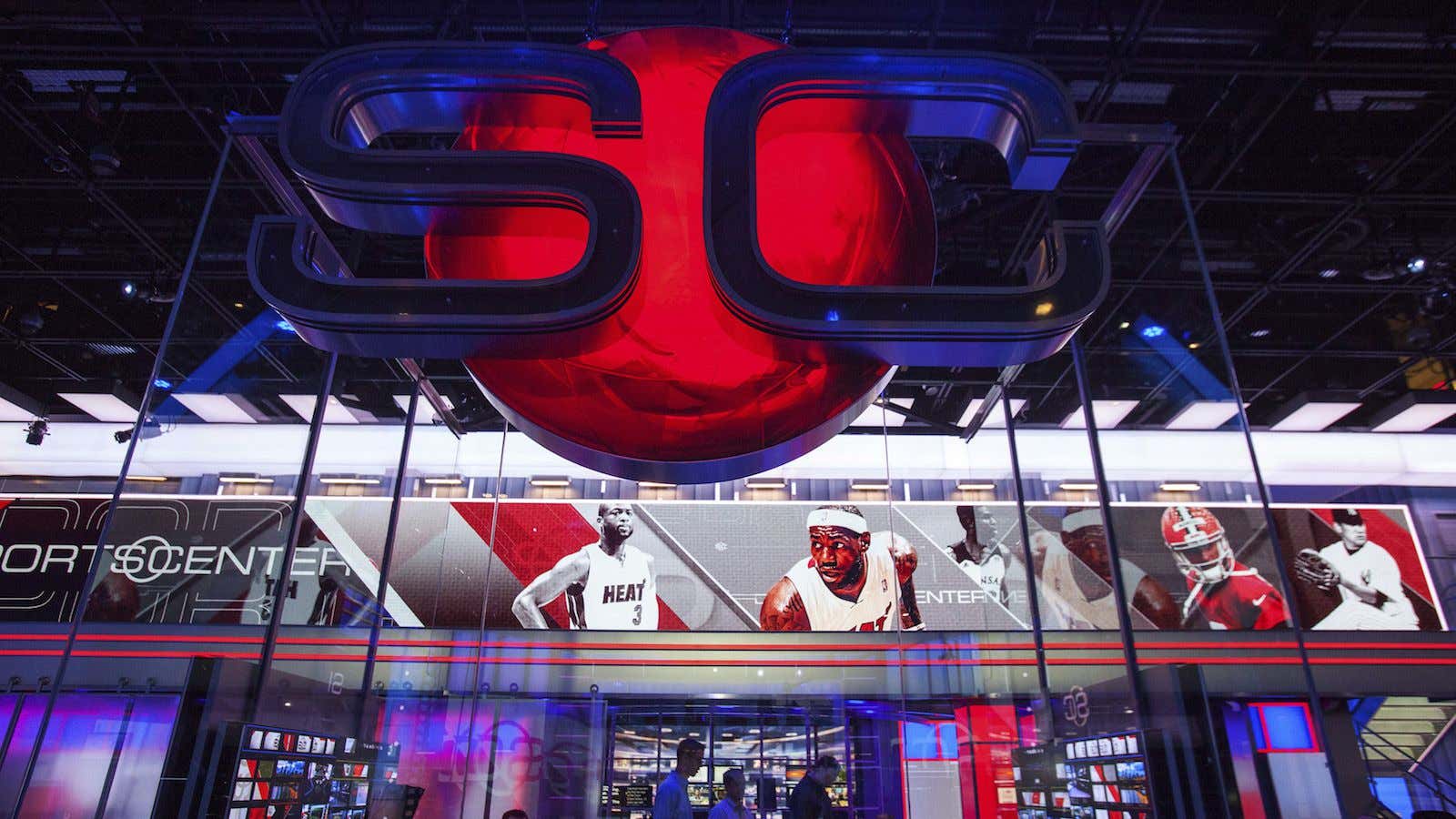This story has been updated with details of Disney’s earnings.
Disney dominated the movie industry last year with titles like Finding Dory and Rogue One that drove it to a record $7 billion at the global box-office and captured 26% of the domestic market. And it has new Guardians of the Galaxy and Star Wars films due out by year’s end.
Yet, even with such huge hits, all eyes are on ESPN’s bottom line ahead of Disney’s latest earnings announcement today.
That’s because there’s still big money in TV, especially for ESPN. At Disney, media networks like ESPN bring home more than double annually what Disney makes off all the movie tickets, DVDs and digital copies, and other revenue tied to its studio films—combined.
Media networks also account for roughly half of Disney’s operating income—49% as of last fiscal year, which included the release of The Force Awakens and opening of Shanghai Disneyland.
Most of that revenue comes from affiliate fees—the money cable providers like Charter and Comcast pay Disney to carry its networks. This year, SNL Kagan estimates cable providers are paying about $7.86 per month, for each subscriber. That’s more than three times what the next most-expensive US cable network, TNT, makes. And about $1 less than the $8.65 the average US movie ticket cost in 2016.
The media conglomerate has been able to command top dollar because it has some of the most coveted programming on TV—live sports, and premium ones at that, including the NFL, the NBA, and US college football.
In 2016, ESPN’s 90 million subscribers would have been worth about $7.8 billion in affiliate revenue, based on the $7.21 SNL Kagan estimated providers paid that year. (Disney said contractual-rate increases rose its affiliate revenue last quarter.) Combined with other ESPN networks like ESPN2, ESPNU, and the SEC Network, the Disney-owned sports channels would have brought in around $9.5 billion.
That doesn’t include advertising, which is beholden to TV ratings and subscribers. The more people watch, the more ESPN can charge advertisers to air commercials during its programming.
Cable TV used to be steadier income than movies and other media businesses. Before pay-TV packages were trimmed and moved online, ESPN and Disney’s other networks were in nearly every bundle. The company could count on that affiliate revenue, month after month, regardless of whether anyone watched the networks. The problem is, thanks to cord-cutting and cord-shaving, fewer people are tuning in.
ESPN has lost 10 million subscribers since its peak in 2010, which has in turn dragged on Disney’s profits. And the rising cost of sports rights have made it more expensive to do business.
Investors want to know, as they have for months now, how Disney plans to secure the sports channel’s future. Amid cutbacks, ESPN laid off 100 on-air personalities and writers last month.
Disney is preparing to sell an ESPN package online that would reportedly complement the cable channel. It has not said exactly what it will include, however, or how much it cost—and whether that cost could offset the declines as fewer people watch cable TV.
Update (4:30pm ET): Things were worse than expected at ESPN during the second quarter of 2017. Disney’s media networks brought in $5.95 billion (pdf) during the period, missing the $5.99 billion FactSet analysts predicted. The company’s revenue as a whole was $13.34 billion revenue, also below expectations. But Disney’s adjusted earnings beat FactSet consensus and rose 10% year-over-year to $1.50 per share. Shares were trading down 1.6% at $110.25 at the time of this writing.
